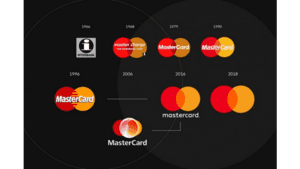
“Central banks have accelerated their exploration of digital currencies with a variety of objectives, from fostering financial inclusion to modernizing the payments ecosystem,” said Raj Dhamodharan, Executive Vice President, Digital Asset and Blockchain Products and Partnerships, Mastercard.
“Mastercard is driving innovation with the public sector, banks, fintechs, and advisory firms in the exploration of CBDCs, working with partners that are aligned to our core values and principles. This new platform supports central banks as they make decisions now and in the future about the path forward for local and regional economies.”
The need?
A Central Bank Digital Currency (CBDC) is notable because it has the backing of a country’s central bank. This means the central bank possesses the liability (not individual banks). A Central Bank Digital Currency is, therefore, the digital form of a country’s fiat currency which also possesses the claim on the central bank.
CBDCs are designed to be equivalent in value to a nation’s paper currency and subject to the same government-backed guarantees. In addition to printing money, central banks can issue CBDCs as a digital representation of a country’s fiat currency. Instead of printing money, the central bank issues electronic coins or accounts backed by the full faith and credit of the government.
As decentralised digital currencies – like Bitcoin – have become more popular the world’s central banks have realised they need to either participate or see the evolution of money pass from their control. With the global economy racing to embrace digital payments, central banks are looking to the future. As part of their traditional issuance and distribution of currency, many are already investigating how to support innovation while maintaining monetary policy and financial stability.
According to a recent survey by the Bank for International Settlements (the ‘central bankers’ bank’:
- 80% of central banks surveyed are engaging in some form of Central Bank Digital Currencies (CBDCs) work
- 40% have progressed from conceptual research to experimenting with concept and design.
Mastercard and its relevance to CBDCs
Mastercard has long experience of:
- operating multiple payment rails
- convening partners to ensure a level playing field for everyone.
Its reach includes banks, businesses and mobile network operators (to mention just three). It believes it can assist bringing the most people possible into a future digital economy. Mastercard says it wishes to harness its expertise to enable the practical, safe and secure development of digital currencies.
While multiple potential operating models exist, the primary approach sees central banks issuing and distributing currency. This includes digital currencies and occurs through commercial banks and other licensed payments providers. In this context Mastercard claims it understands every central bank differs in its exploration of CBDCs. The Mastercard platform will be ready to explore whether CBDCs fit with the specific needs of a region or country.
Mastercard and its CBDC virtual testing platform
The platform, which is virtual, can be individually customised to the environment in which a central bank operates. This enables each central bank (or combinations) to:
- build use cases and test roll-out strategies for CBDCs by simulating a CBDC ecosystem
- simulate a CBDC issuance, distribution and exchange ecosystem with banks and consumers, including how a CBDC can interface with existing payment networks and infrastructures (payment cards and real time payments)
- demonstrate how a consumer might use a CBDC to pay for goods and services anywhere Mastercard has acceptance
- examine various CBDC technology designs and use cases to determine value and feasibility in a given market
- evaluate CBDC development efforts, including the technical build, security and early testing of the design and operations.
Sheila Warren, Head of Blockchain, Digital Assets and Data Policy at the World Economic Forum, said: “Collaborations between the public and private sectors in the exploration of Central Bank Digital Currencies can help central banks better understand the range of technology possibilities and capabilities available with respect to CBDCs. Central banks can benefit from support in exploring the option set available to them with respect to CBDCs, as well as gaining insight into what opportunities may be forthcoming.”
Enterprise Times: what does this mean
Enabling banks to assess and explore digital currencies is interesting. Enabling central banks to assess and explore national digital currencies even more so, especially when promoted by a proven payments specialist like Mastercard.
In effect, Mastercard is committing to supporting central banks if they choose to modernise payments. This matters to central banks because they are seeking solutions which can integrate digital payments/currencies with existing payment mechanisms.
To promote its CDBC testing platform Mastercard says it will forge partnerships between public and private sectors – in order to assess – and potentially transform – the way people and businesses transact. It is inviting central banks, commercial banks, tech companies and advisory firms to partner with Mastercard to:
- assess CBDC tech designs
- validate use cases
- evaluate interoperability with the existing payment rails available to consumers and businesses today.


























